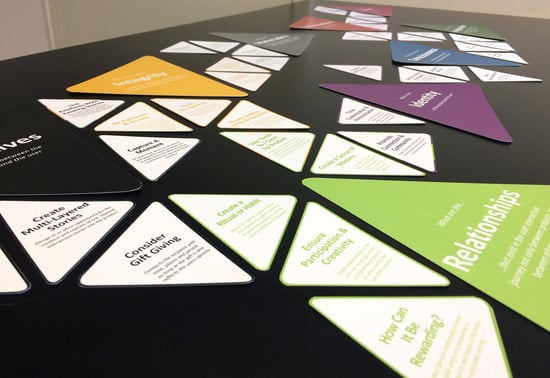Emotional Durability Design Nine—A Tool for Product Longevity
Abstract
:1. Introduction
Lighting Industry and CE
2. Literature Review
2.1. Product Lifetimes
2.2. Emotion-Centered Design
2.3. Interim Summary
3. Methodology
4. Developing the Framework
4.1. Understanding NPD as a System
4.2. Refining Concepts into a Framework
- What are the meaningful, emotion-driven engagements that exist in the user product interaction journey?
- How can we use these to design things that people can and want to keep for longer?
4.3. Testing the Concepts and the Framework
4.3.1. Narrative-Based Enquiry
4.3.2. Design Charrette
4.4. Feedback and Reflection
- Did the framework influence the way you thought about designing the object?
- Was the framework a help or a hindrance to the design process?
- Do you feel you have a better understanding of emotional durability?
- Which of these themes do you think would apply to the design of a light?
4.5. Results from the Workshop 1–7
5. Presentation of the Framework
5.1. Relationships
5.2. Narratives
5.3. Identity
5.4. Imagination
5.5. Conversations
5.6. Consciousness
5.7. Integrity
5.8. Materiality
5.9. Evolvability
6. Discussion
6.1. Alternative Perspective for Producers
6.2. Identifying Emotion Value Propositions within Product Longevity Strategies
6.2.1. Upgradeability and Adaptability
6.2.2. Maintenance and Repair
6.2.3. Durability and Longevity
6.3. Future Research
7. Conclusions
Author Contributions
Acknowledgments
Conflicts of Interest
References
- Lofthouse, V.A.; Prendeville, S. Considering the User in the Circular Economy. In Proceedings of the 2nd Conference on Product Lifetimes and the Environment (PLATE), Delft, The Netherlands, 8–10 November 2017; pp. 1–7. [Google Scholar]
- Chapman, J.A. Emotionally Durable Design: Objects, Experiences and Empathy, 1st ed.; Earthscan: London, UK, 2005. [Google Scholar]
- Chapman, J.A. Emotionally Durable Design: Objects, Experiences and Empathy, 2nd ed.; Routledge: London, UK, 2015. [Google Scholar]
- Ko, K.; Ramirez, M.; Ward, S. Long-Term Product Attachment: A Sustainable Design Approach for Optimising the Relationship Between Users and Products. In Proceedings of the Tao of Sustainability, International Conference on Sustainable Design Strategies in a Globalization Context, Beijing, China, 27–29 October 2011; pp. 580–587. [Google Scholar]
- Van Krieken, B. A Sneaky Kettle: Emotionally Durable Design Explored in Practice. Master’s Thesis, Delft University of Technology, Delft, The Netherlands, 2011. [Google Scholar]
- Van Krieken, B.; Bakker, C.; Desmet, P.; Mason, J.; Aliakseyeu, D.; Mason, J. A Sneaky Kettle: Emotionally Durable Design Explored in Practice. In Proceedings of the 8th International Conference on Design and Emotion, London, UK, 11–14 September 2012. [Google Scholar]
- Tokaya, G.E. Ethos: Exploring Emotionally Durable Design Strategies in the Field of LED Lighting. Master’s Thesis, Delft University of Technology, Delft, The Netherlands, 2013. [Google Scholar]
- Padró, M.B. Emotionally Durable Lighting: An Exploration of Emotionally Durable Design for the Lighting Domain. Master’s Thesis, Delft University of Technology, Delft, The Netherlands, 2014. [Google Scholar]
- Lacey, E. Contemporary Ceramic Design for Meaningful Interaction and Emotional Durability: A Case Study. Int. J. Des. 2009, 3, 87–92. [Google Scholar]
- Bakker, C.; den Hollander, M.; Van Hinte, E.; Zijlstra, Y. Products That Last: Product Design for Circular Business Models; TU Delft Library: Delft, The Netherlands, 2014. [Google Scholar]
- Moreno, M.; De los Rios, C.; Rowe, Z.; Charnley, F. A Conceptual Framework for Circular Design. Sustainability 2016, 8, 937. [Google Scholar] [CrossRef]
- The Great Recovery—RSA. Investigating the Role of Design in the Circular Economy; The Great Recovery: London, UK, 2013; pp. 1–46. [Google Scholar]
- Forum for the Future. Design for Demand. Available online: http://designfordemand.forumforthefuture.org/ (accessed on 28 June 2017).
- Moreno, M.A.; Ponte, O.; Charnley, F. Taxonomy of Design Strategies for a Circular Design Tool. In Proceedings of the 2nd Conference on Product Lifetimes and the Environment (PLATE), Delft, The Netherlands, 8–10 November 2017; pp. 275–279. [Google Scholar]
- IDEO. The Circular Design Guide. Available online: https://www.circulardesignguide.com/ (accessed on 28 June 2017).
- Bakker, C.; Schuit, C.S. THE Long View—Exploring Product Lifetime Extension; UN Environment: Nairobi, Kenya, 2017. [Google Scholar]
- Van Nes, N.; Cramer, J. Influencing Product Lifetime through Product Design. Bus. Strateg. Environ. 2005, 14, 286–299. [Google Scholar] [CrossRef]
- Umwelt Bundesamt. Einfluss der Nutzungsdauer von Produkten auf ihre Umweltwirkung: Schaffung einer Informationsgrundlage und Entwicklung von Strategien gegen “Obsoleszenz”; Umwelt Bundesamt: Dessau-Roßlau, Germany, 2016. [Google Scholar]
- Mugge, R.; Schoormans, J.P.L.; Schifferstein, H.N.J. Design Strategies to Postpone Consumers’ Product Replacement: The Value of a Strong Person-Product Relationship. Des. J. 2005, 8, 38–48. [Google Scholar] [CrossRef]
- Ellen MacArthur Foundation. Towards the Circular Economy: Opportunities for the Consumer Goods Sector; Ellen MacArthur Foundation: Cowes, UK, 2013; pp. 1–112. [Google Scholar]
- Ljungberg, L.Y. Materials Selection and Design for Development of Sustainable Products. Mater. Des. 2007, 28, 466–479. [Google Scholar] [CrossRef]
- Schifferstein, H.N.J.; Zwartkruis-Pelgrim, E.P.H. Consumer-Product Attachment: Measurement and Design Implications. Int. J. Des. 2008, 2, 1–13. [Google Scholar]
- Mugge, R. Product Attachment. Ph.D. Thesis, Delft University of Technology, Delft, The Netherlands, 2007. [Google Scholar]
- Mugge, R.; Schifferstein, H.N.J.; Schoormans, J.P.L. Product Attachment and Satisfaction: Understanding Consumers’ Post-purchase Behavior. J. Consum. Mark. 2010, 27, 271–282. [Google Scholar] [CrossRef]
- Page, T. Product Attachment and Replacement: Implications for Sustainable Design. Int. J. Sustain. Des. 2014, 2, 265–282. [Google Scholar] [CrossRef]
- Cooper, T. Product Development Implications of Sustainable Consumption. Des. J. 2000, 3, 46–57. [Google Scholar] [CrossRef]
- Van Hinte, E. Eternally Yours: Visions on Product Endurance. In Design; 010 Publishers: Rotterdam, The Netherlands, 1997. [Google Scholar]
- Maclachlan, M. Emotional Design Strategies to Enhance User Experience and Encourage Product Attachment. Ph.D. Thesis, Glasgow Caledonian University, Glasgow, UK, 2011. [Google Scholar]
- Ludden, G.D.S. Sensory Incongruity and Surprise in Product Design. Ph.D. Thesis, Delft University of Technology, Delft, The Netherlands, 2008. [Google Scholar]
- Strauss, C.F.; Fuad-luke, A. The Slow Design Principles. In Proceedings of the Changing the Change Design, Visions, Proposals and Tools, Turin, Italy, 10–12 July 2008; pp. 1–14. [Google Scholar]
- Grosse-Hering, B. Slow Design. Master’s Thesis, Delft University of Technology, Delft, The Netherlands, 2012. [Google Scholar]
- Martin, B.; Hanington, B. Universal Methods of Design: 100 Ways to Research Complex Problems, Develop Innovative Ideas, and Design Effective Solutions; Rockport Publishers: Beverly, MA, USA, 2012. [Google Scholar]
- Sims, N.H. The Complete Guide to Designing and Running Brilliant Workshops and Meetings; Pearson Education: London, UK, 2006. [Google Scholar]
- Philips Corporate Design. Guidelines for Ecological Design; Philips Corporate Design: Eindhoven, The Netherlands, 1996. [Google Scholar]
- Norton, M.I.; Mochon, D.; Ariely, D. The IKEA Effect: When Labor Leads to Love. J. Consum. Psychol. 2012, 22, 453–460. [Google Scholar] [CrossRef] [Green Version]
- Eyal, N.; Hoover, R. Hooked: How to Build Habit-Forming Products; Portfolio (Penguin Group): London, UK, 2014. [Google Scholar]
- Casais, M.; Mugge, R.; Desmet, P.M.A. Using Symbolic Meaning as a Means to Design for Happiness: The Development of a Card Set for Designers. In Proceedings of the 50th Anniversary Conference on Design Research Society (DRS 2016), Brighton, UK, 28–30 June 2016. [Google Scholar]
- Desmet, P.; Hekkert, P. Framework of Product Experience. Int. J. Des. 2007, 1, 57–66. [Google Scholar]
- Govers, P.C.M.; Schoormans, J.P.L. Product Personality and Its Influence on Consumer Preference. J. Consum. Mark. 2005, 22, 189–197. [Google Scholar] [CrossRef]
- Nicolás, J.C.O.; Aurisicchio, M.; Desmet, P.M.A. Pleasantness and Arousal in Twenty-Five Positive Emotions Elicited by Durable Products. In The Colors of Care: Design & Emotion 2014, 9th International Conference, Colombia; Universidad de los Andes: Bogotá, Colombia, 2014; pp. 221–227. [Google Scholar]
- Jordon, P. Designing Pleasurable Products: An Introduction to the New Human Factors; Taylor & Francis: London, UK, 2000. [Google Scholar]
- Mullaney, T. Designing for Durable Relationships with Products. In Proceedings of the 7th International Conference on Design & Emotion, Chicago, IL, USA, 4–7 October 2010. [Google Scholar]
- Philips. Philips Expert 19, Interview in Person; Philips: Amsterdam, The Netherlands, 2016. [Google Scholar]
- Norman, D.A. Emotional Design: Why We Love (Or Hate) Everyday Things; Basic Books: New York, NY, USA, 2004. [Google Scholar]
- Lasseter, J. Tricks to Animating Characters with a Computer. ACM Siggraph Comput. Graph. 2001, 35, 45–47. [Google Scholar] [CrossRef]
- Mann, S. Veillance Integrity by Design. IEEE Consum. Electron. Mag. 2016, 5, 33–40. [Google Scholar] [CrossRef]
- Chapman, J. Design, Emotion and Longer-Lasting Products—Deliver Specific Insights to Designers How to Create Emotionally Durable Products. In Proceedings of the Celebration & Contemplation, 10th International Conference on Design & Emotion, Amsterdam, The Netherlands, 27–30 September 2016. [Google Scholar]
- McDonough, W.; Braungart, M. Cradle to Cradle: Remaking the Way We Make Things; North Point Press: New York, NY, USA, 2002. [Google Scholar]
- Marchand, A. Sustainable Users and the World of Objects Design and Consumerism. In Eternally Yours: Time in Design: Product Value Sustenance; Van Hinte, E., Ed.; 010 Publishers: Rotterdam, The Netherlands, 2004; pp. 102–131. [Google Scholar]
- Van Nes, N. Understanding Replacement Behaviour and Exploring Design Solutions. In Longer Lasting Products: Alternatives to the Throwaway Society; Cooper, T., Ed.; Gower: Surrey, UK, 2010; pp. 108–131. [Google Scholar]
- Bridgens, B.; Lilley, D.; Smalley, G.; Balasundaram, K. Ageing Gracefully to Increase Product Longevity. In Proceedings of the 2015 Conference on Product Lifetimes and the Environment, Nottingham, UK, 17–19 June 2015; pp. 19–26. [Google Scholar]
- Rognoli, V.; Karana, E. Toward a New Materials Aesthtic Based on Imperfection and Graceful Aging. In Materials Experience: Fundamentals of Materials and Design; Karana, E., Pedgley, O., Rognoli, V., Eds.; Elsevier Science: New York, NY, USA, 2014; pp. 147–153. [Google Scholar]
- Koren, L. Wabi-Sabi for Artists, Designers, Poets & Philosophers; Imperfect Publishing: Point Reyes, CA, USA, 2008. [Google Scholar]
- Keulemans, G. The Geo-Cultural Conditions of Kintsugi. J. Mod. Craft 2016, 9, 15–34. [Google Scholar] [CrossRef]
- Russo Rodrigues, B. Shoes, Cars and Other Love Stories: Investigating the Experience of Love for Products. Ph.D. Thesis, Delft University of Technology, Delft, The Netherlands, 2010. [Google Scholar]
- Zak, P.J. How Stories Change the Brain. Greater Good: The Science of a Meaningful Life, 17 December 2013; 1–4. [Google Scholar]
- iFixit. Self-Repair Manifesto. Available online: https://www.ifixit.com/Manifesto (accessed on 25 April 2018).
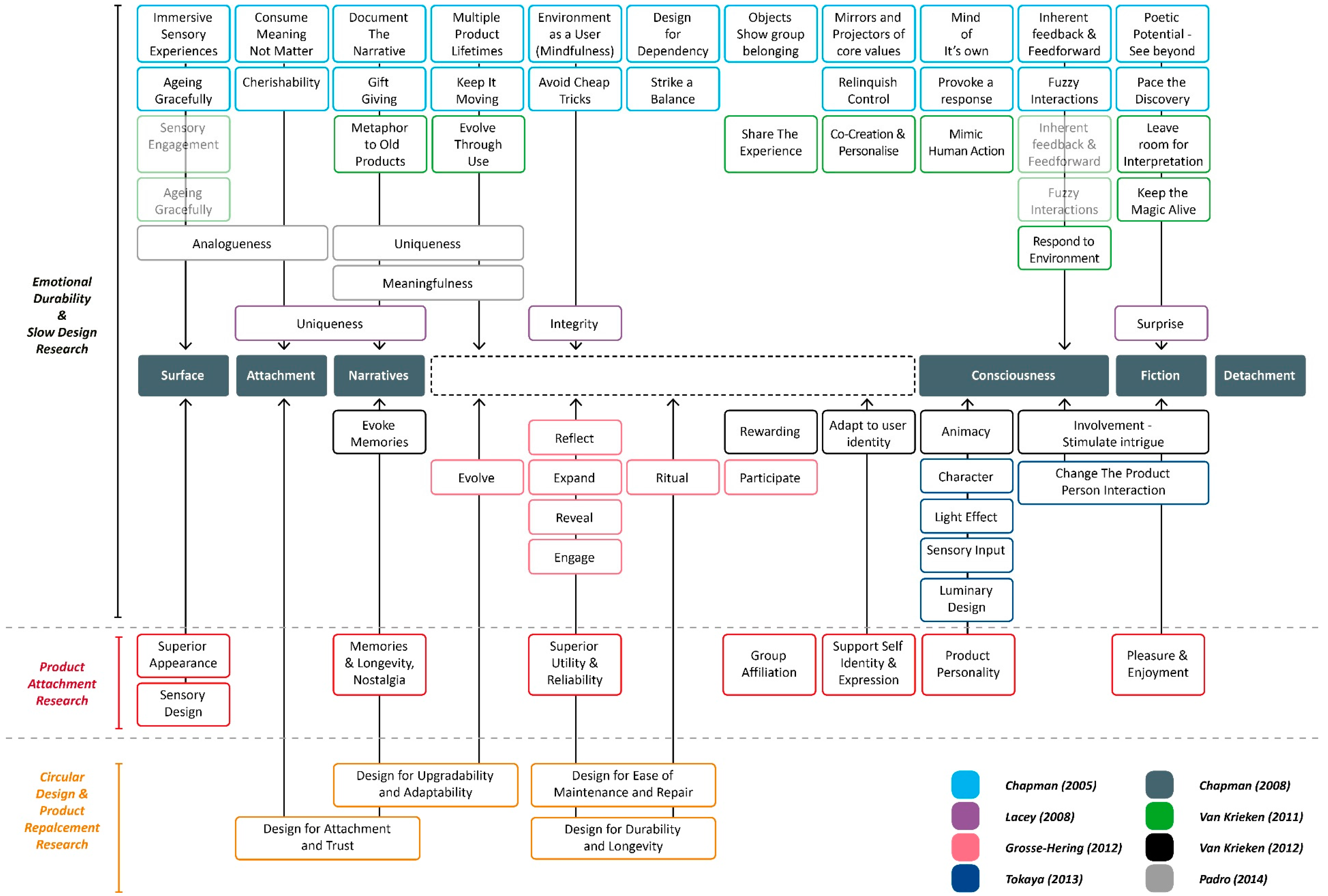
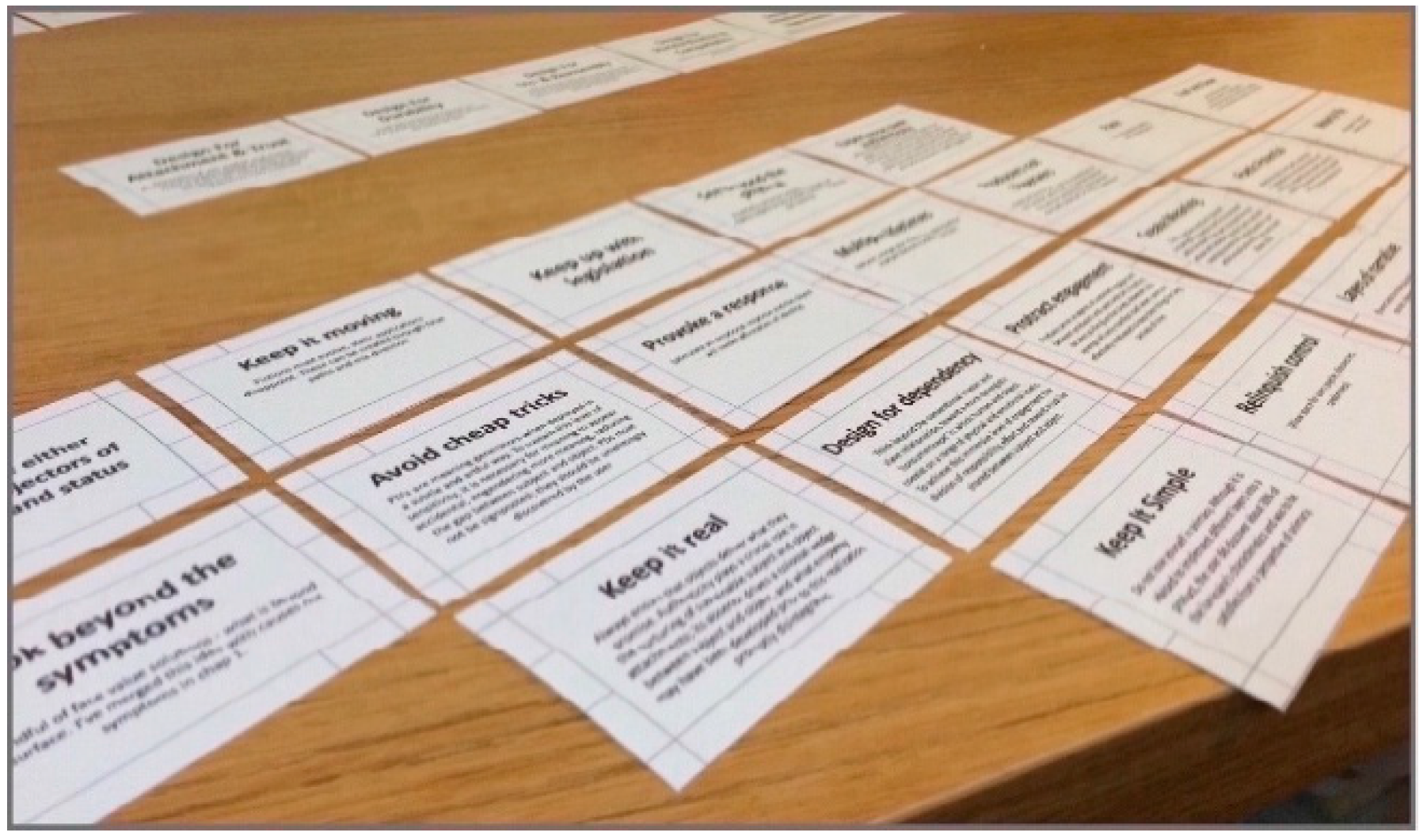

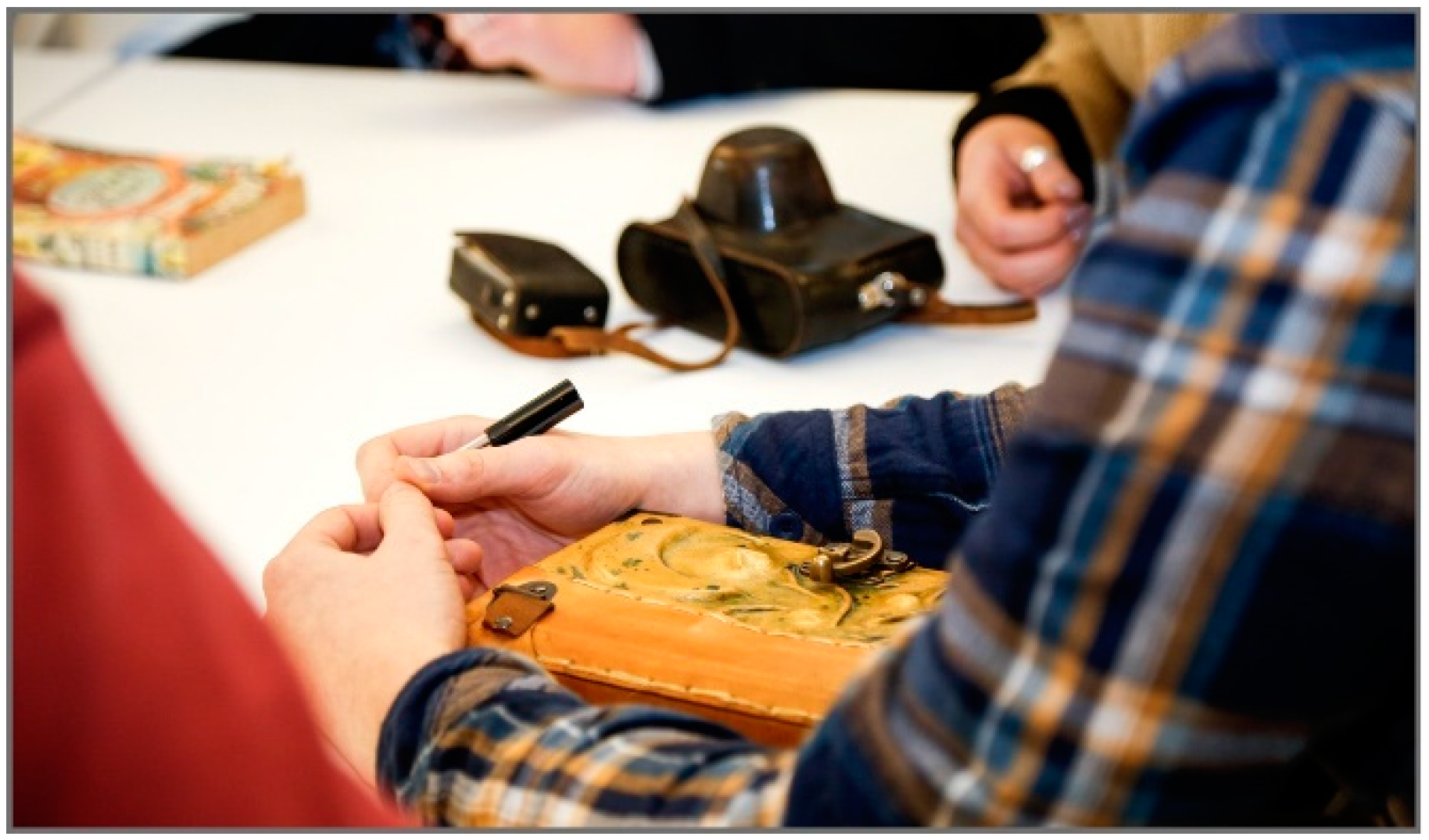
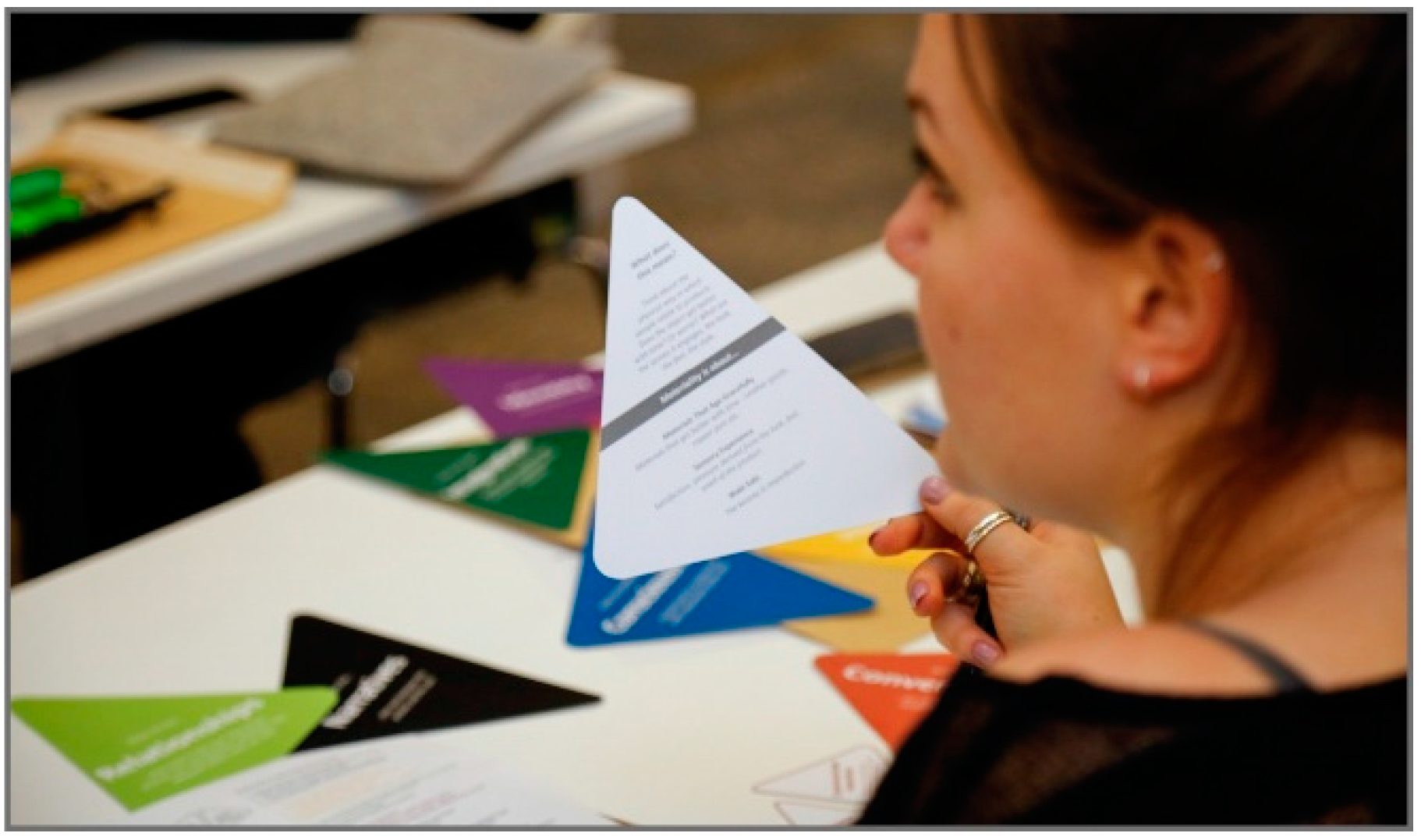
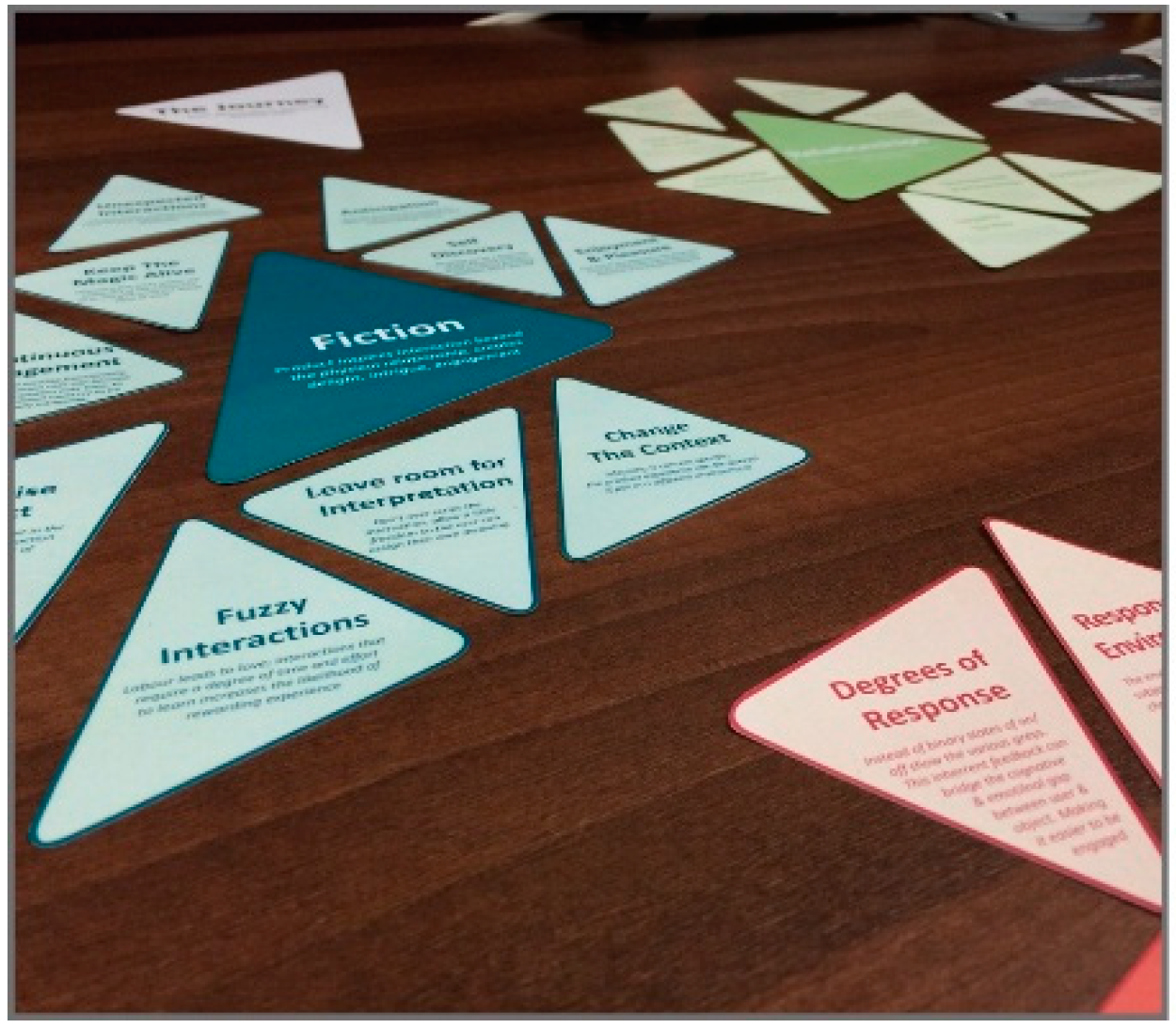
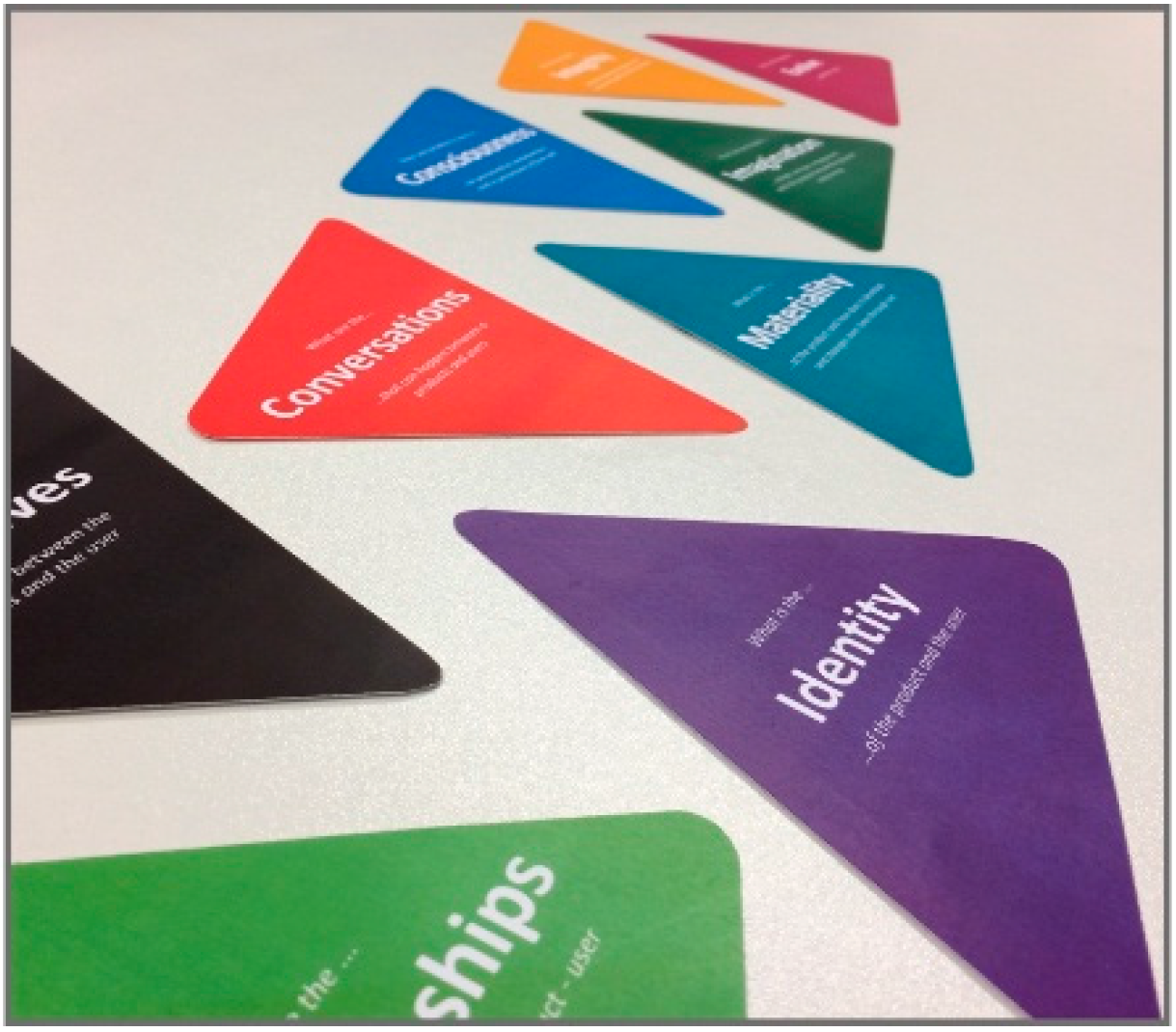
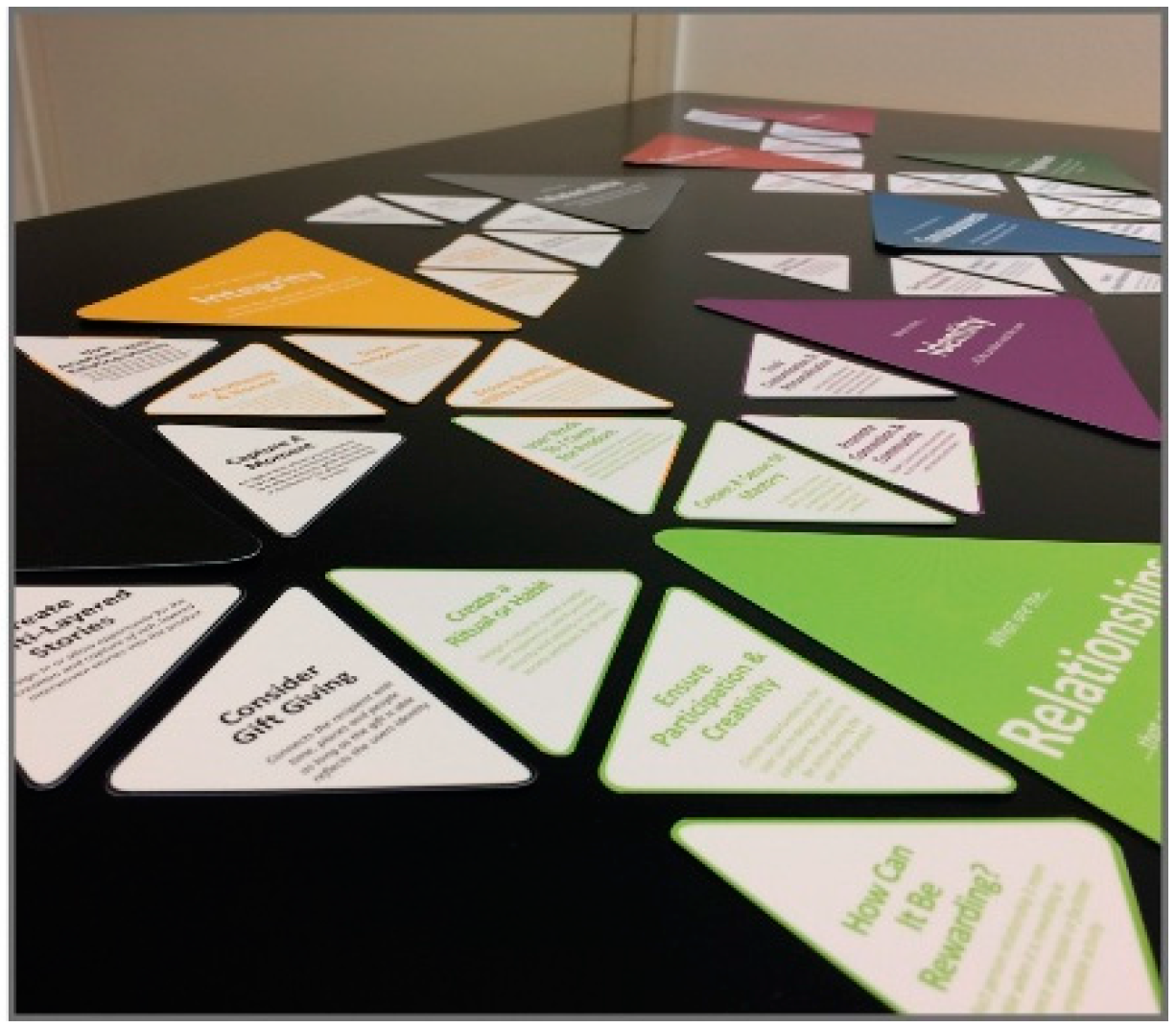
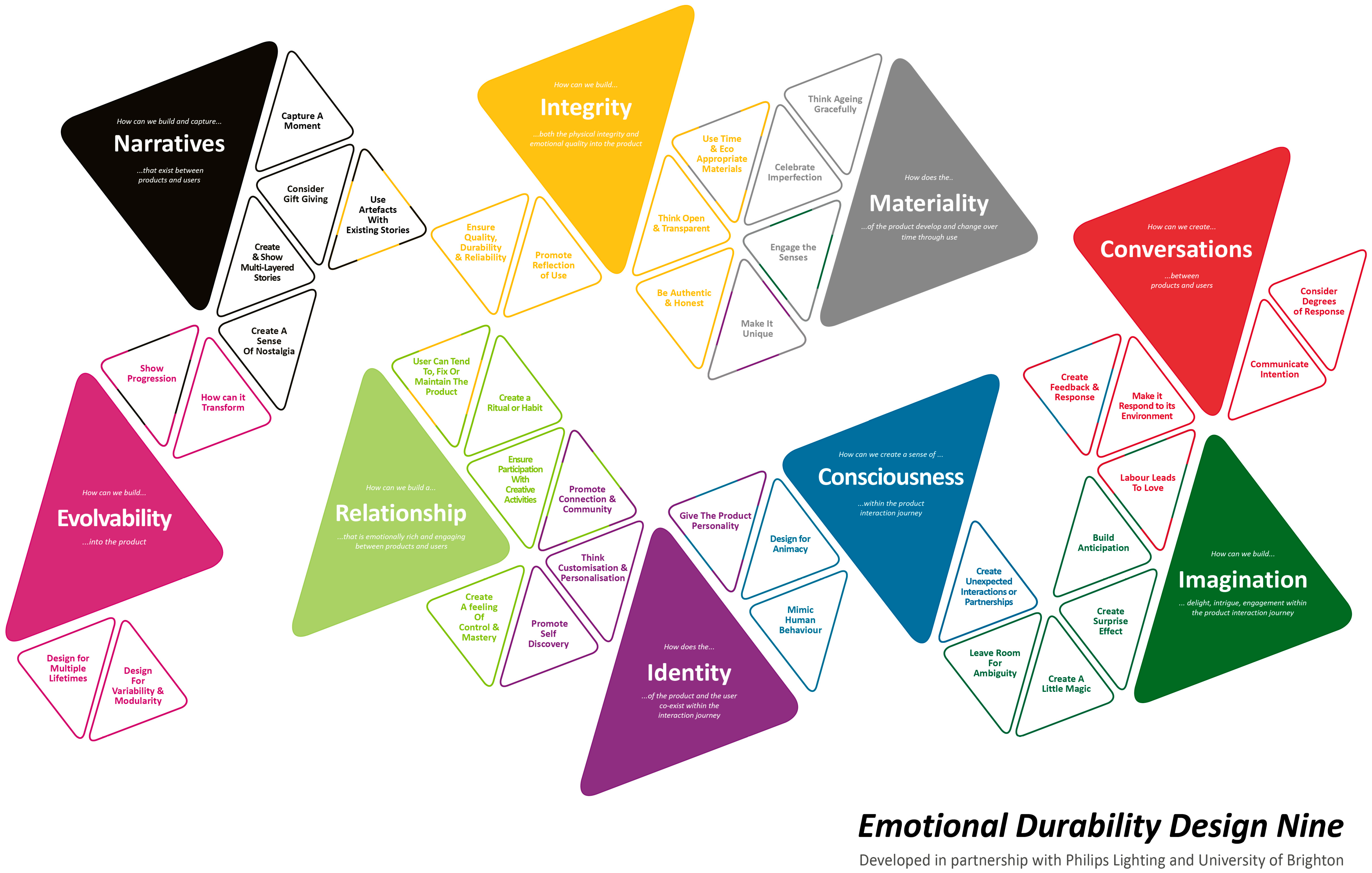
| Strategies for Product Longevity | Researchers |
|---|---|
| Design for Attachment and Trust | Bakker et al. [10]; Mugge Schoormans & Schifferstein [19]; Van Nes and Cramer [17] |
| Design for Adaptability and Upgradability | Bakker et al. [10]; Mugge Schoormans & Schifferstein [19]; Van Nes and Cramer [17] |
| Design for Ease of Maintenance and Repair | Bakker et al. [10]; Mugge Schoormans & Schifferstein [19]; Van Nes and Cramer [17] |
| Design for Durability and Longevity | Bakker et al. [10]; Great recovery project [12]; Ellen Macarthur Foundation [20]; Ljungberg [21]; Mugge, Schoormans & Schifferstein [19]; Van Nes and Cramer [17] |
| Strategies | Researchers |
|---|---|
| Memories & (Longevity) (Nostalgia) | Mugge [23]; Schifferstein & Zwartkruis-Pelgrim [22]; Maclachlan [28]; Page [25] |
| Pleasure | Mugge [23]; Schifferstein & Zwartkruis-Pelgrim [22]; Maclachlan [28]; Page [25] |
| Enjoyment | Schifferstein & Zwartkruis-Pelgrim [22] |
| Self-Expression or Support-Self Identity | Mugge [23]; Schifferstein & Zwartkruis-Pelgrim [22]; Maclachlan [28] |
| Usability | Page [25] |
| Sensory Design | Maclachlan [28]; Ludden [29] |
| Superior Appearance | Mugge, Schifferstein & Schoormans [24] |
| Utility and Reliability | Schifferstein & Zwartkruis-Pelgrim [22] |
| Product Personality | Mugge [23]; Maclachlan [28] |
| Group Affiliation | Mugge [23] |
| 9 Themes | 38 Strategies |
|---|---|
| Relationships How can we build a relationship that is emotionally rich and engaging between products and users? | Ensure Participation with Creative Activities—Create opportunities so the user can re-design and reconfigure the product during the use of the product. Perhaps though DIY, craft or hacking. [2,5,8,31,34] |
| User Can, Fix or Maintain the Product—Create a mechanism where care and attention is taken to maintain the object, this fosters a relationship that is rewarding through ‘mutual altruism’. [2,5,10] | |
| Create A Ritual or Habit—Design in a ritual to create a better user experience, providing security and stability in a hectic society. [31,35] | |
| Create A feeling Of Control & Mastery—The ability to master (feel in control of) one’s context through the object; a driver for psychological well-being. [36] | |
| Narratives How can we build and capture narratives that exist between products and users? | Consider Gift Giving—Connects the recipient with time, places and people as long as the gift is able to reflect the user’s identity. [3,23] |
| Create A Sense of Nostalgia—Use metaphors of old products to evoke memories of previous times, experiences and objects. [5,27,37] | |
| Use Artefacts with Existing Stories—Some objects are valued because of their provenance, i.e., antiques, or materials that already have a story. | |
| Capture A Moment—An object that allows you to capture and reproduce moments will enable you to evoke memories while also being a mechanism for documenting the narrative. | |
| Create & Show Multi-Layered Stories—Design in or allow the opportunity for the creation and capture of rich, layered interwoven stories into the product. [2] | |
| Identity How does the identity of the product and the user coexist within the interaction journey? | Think Customisation & Personalisation—Users desire to differentiate themselves from others and express their identity, as this gives a sense of uniqueness. [23,28] |
| Give the Product a Personality—Be actively conscious of the personality you create and how this affects perception and preference. [37,38] | |
| Promote Connection & Community—People have a need to be connected and involved with others, consider the ways the product can connect people together and produce group affiliation. [8,22,23] | |
| Promote Self Discovery—How can an object can be a facilitator of self-discovery or help you know something previously unknown about yourself? | |
| Imagination How can we build imagination delight, intrigue, engagement within the product interaction journey? | Create Surprise Effect—Moments of surprise in the user–product interaction increase levels of engagement—such as unexpected functional interactions. [29] |
| Leave Room for Ambiguity—Don’t over script the interaction, allow a little freedom for the user to assign their own meaning. [2,5] | |
| Create A Little Magic—Imbue the product with a little mystery and wonder, conceal a few tricks within the semantics of the interaction to create engaging discovery. [2] | |
| Build Anticipation—Time the discovery as to not give away the whole story at once, this helps maximize anticipation and enhance feelings of love. [2,39,40] | |
| Conversations How can we create conversations between products and users? | Create Inherent Feedback & Response—Stimulate a response from the user through communication mechanisms, this will invoke an affirmation of identity bridging the emotional gap. [2,5,41] |
| Consider Degrees of Response—Instead of binary states of on/off show more distinctions to enhance material engagement. [2,5,42] | |
| Labor Leads to Love—Interactions that require a degree of time and effort to learn increase the likelihood of a rewarding experience. [2,34] | |
| Respond to the Environment—The environments of most objects are subject to change; allowing it to react to changes automatically makes it more dynamic over time. [43] | |
| Communicate Intention—Users are more likely to disable automated systems when they feel they don’t know why things are happening. [43,44] | |
| Consciousness How can we create a sense of consciousness within the product interaction journey? | Design for Animacy—Allow the object to be expressive and show a sense of character, this will lead to a sense of consciousness. [5,7,45] |
| Mimic Human Behavior—Make the interaction similar to how humans or animals behave will make the interaction more intuitive. [5,7] | |
| Create Unexpected Interactions or Partnerships—Unconventional methods of interaction or partnerships with other users or objects can increase engagement and animacy. [7] | |
| Integrity How can we build integrity both the physical integrity and emotional quality into the product? | Be Authentic & Honest—Ensure the product delivers what it promises. Authenticity is crucial when nurturing attachment; its absence will dissolve any empathy developed up until that point. [2,3] |
| Think Open & Transparent—Some products are hard to access and discover. Allow the user to see in and know the object. [46] | |
| Promote Reflection of Use—Provide time for the user to think about their actions, visualize processes to encourage contemplation and ‘reflective consumption’. [2,3,31] | |
| Use Time & Eco-Appropriate Materials—Consider the various time and ecological dimensions of the materials that exist within the product lifetime (e.g., technosphere-biosphere). [10,20,47,48] | |
| Ensure Quality, Durability, & Reliability—The main driver to detachment and dissatisfaction is a failure in utility. Ensure the product performs well and can maintain itself. [5,10,49,50] | |
| Materiality How does the materiality of the product develop and change over time through use? | Think Ageing Gracefully—Choose materials and coatings that over time wear or mature in a beautiful or interesting manner. [2,3,5,27,51,52] |
| Celebrate Imperfection—Embrace the imperfections and transience of existence—achieve this through asymmetry, roughness, irregularity, simplicity, economy, and austerity. [53,54] | |
| Engage the Senses—Provide the opportunity for a multi-sensory experience to increase the likelihood of active engagement. [5,28,29] | |
| Make It Unique—Produce an output that cannot be reproduced or transferred will ensure its irreplaceability. [8,9,52] | |
| Evolvability How can the product evolve with the user? | Design for Variability & Modularity—Design the product to vary in use without the need for extra parts. [19,50] |
| Design for Multiple Lifetimes—How can we design a product that can have multiple lifetimes and stories—perhaps with many generations of users? | |
| Show Progression—Showing the passing of time documents the product’s narrative, which could also facilitate psychological wellbeing through personal growth and purpose in life. [2,37] | |
| How Can It Transform?—How can the product or service transform beyond its initial function or materials or process? |
© 2018 by the authors. Licensee MDPI, Basel, Switzerland. This article is an open access article distributed under the terms and conditions of the Creative Commons Attribution (CC BY) license (http://creativecommons.org/licenses/by/4.0/).
Share and Cite
Haines-Gadd, M.; Chapman, J.; Lloyd, P.; Mason, J.; Aliakseyeu, D. Emotional Durability Design Nine—A Tool for Product Longevity. Sustainability 2018, 10, 1948. https://doi.org/10.3390/su10061948
Haines-Gadd M, Chapman J, Lloyd P, Mason J, Aliakseyeu D. Emotional Durability Design Nine—A Tool for Product Longevity. Sustainability. 2018; 10(6):1948. https://doi.org/10.3390/su10061948
Chicago/Turabian StyleHaines-Gadd, Merryn, Jonathan Chapman, Peter Lloyd, Jon Mason, and Dzmitry Aliakseyeu. 2018. "Emotional Durability Design Nine—A Tool for Product Longevity" Sustainability 10, no. 6: 1948. https://doi.org/10.3390/su10061948




